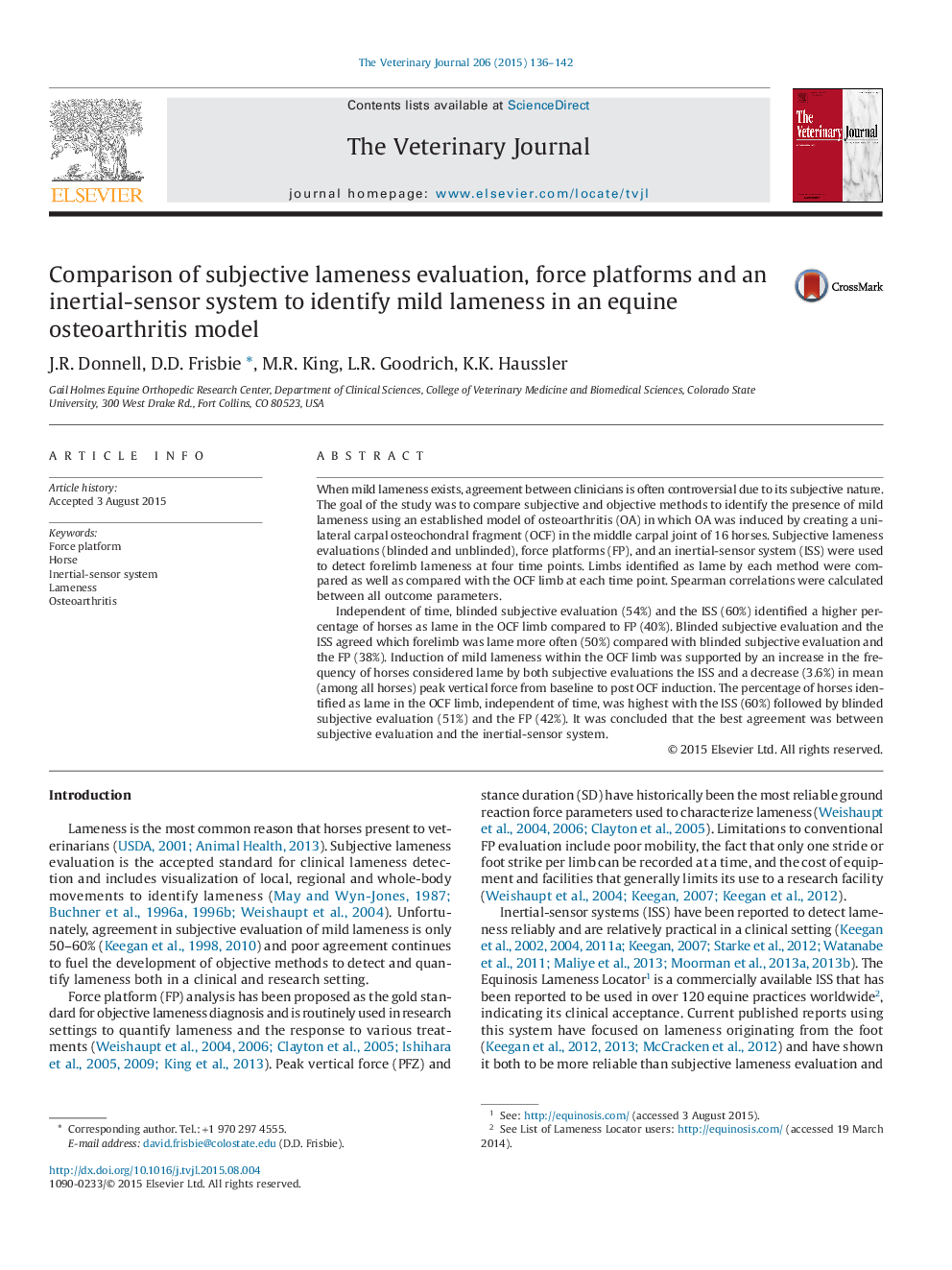| کد مقاله | کد نشریه | سال انتشار | مقاله انگلیسی | نسخه تمام متن |
|---|---|---|---|---|
| 5797726 | 1111759 | 2015 | 7 صفحه PDF | دانلود رایگان |
- Objective and subjective evaluations were compared to identify mild lameness in horses.
- A well-developed controlled model of osteoarthritis was used to induce mild lameness.
- Subjective evaluation and inertial sensor system agree most often.
- There is not a single gold standard for mild lameness detection.
When mild lameness exists, agreement between clinicians is often controversial due to its subjective nature. The goal of the study was to compare subjective and objective methods to identify the presence of mild lameness using an established model of osteoarthritis (OA) in which OA was induced by creating a unilateral carpal osteochondral fragment (OCF) in the middle carpal joint of 16 horses. Subjective lameness evaluations (blinded and unblinded), force platforms (FP), and an inertial-sensor system (ISS) were used to detect forelimb lameness at four time points. Limbs identified as lame by each method were compared as well as compared with the OCF limb at each time point. Spearman correlations were calculated between all outcome parameters.Independent of time, blinded subjective evaluation (54%) and the ISS (60%) identified a higher percentage of horses as lame in the OCF limb compared to FP (40%). Blinded subjective evaluation and the ISS agreed which forelimb was lame more often (50%) compared with blinded subjective evaluation and the FP (38%). Induction of mild lameness within the OCF limb was supported by an increase in the frequency of horses considered lame by both subjective evaluations the ISS and a decrease (3.6%) in mean (among all horses) peak vertical force from baseline to post OCF induction. The percentage of horses identified as lame in the OCF limb, independent of time, was highest with the ISS (60%) followed by blinded subjective evaluation (51%) and the FP (42%). It was concluded that the best agreement was between subjective evaluation and the inertial-sensor system.
Journal: The Veterinary Journal - Volume 206, Issue 2, November 2015, Pages 136-142
